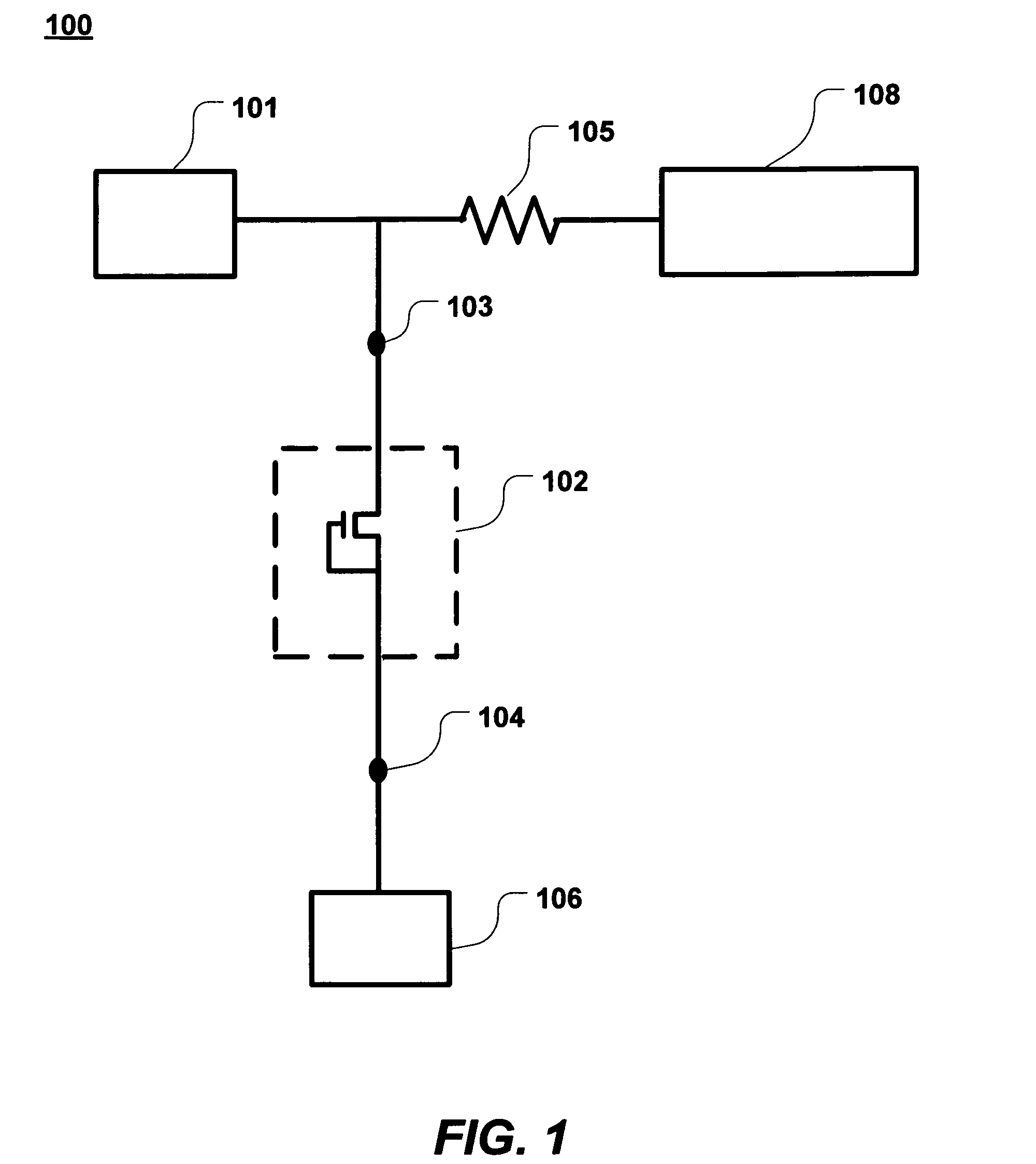String contact structure for high voltage ESD
a contact structure and high voltage technology, applied in the direction of emergency protective arrangements for limiting excess voltage/current, arrangements responsive to excess voltage, and semiconductor/solid-state device details, etc., can solve the problem of partially or sometimes completely stopping the operation of the semiconductor ic device, potentially destructive effects on the gate oxide, and current that damages or destroys the gate oxide, etc. problem, to achieve the effect of improving esd performance and a wider range of applications
- Summary
- Abstract
- Description
- Claims
- Application Information
AI Technical Summary
Benefits of technology
Problems solved by technology
Method used
Image
Examples
Embodiment Construction
[0024]FIG. 1 is a simplified schematic showing an ESD protection system. The pad 101 may be an input / output (I / O) pad or a power supply (Vdd) pad. A clamp device 102 is connected between the pad 101 and a ground (GND) pad 106 to protect the internal circuit 108 from the ESD voltage appearing on the pad 101. The clamp device 102 is the primary ESD protection device that protects against ESD surges at the I / O pad by clamping the voltage and allowing the high ESD current to be discharged safely to the ground terminal 106.
[0025]An example of the clamp device is a diode chain consisting of one or more diodes connected in series or a grounded-gate NMOS (GGNMOS) transistor having a gate terminal, a source terminal, and a drain terminal. The clamp device including the diode chain, GGNMOS transistor, or the combination thereof is typically coupled in parallel to a protected device or an internal circuit 108, between the I / O pad 101 and a ground pad 106. The clamp device 102 is designed to be...
PUM
 Login to View More
Login to View More Abstract
Description
Claims
Application Information
 Login to View More
Login to View More - R&D
- Intellectual Property
- Life Sciences
- Materials
- Tech Scout
- Unparalleled Data Quality
- Higher Quality Content
- 60% Fewer Hallucinations
Browse by: Latest US Patents, China's latest patents, Technical Efficacy Thesaurus, Application Domain, Technology Topic, Popular Technical Reports.
© 2025 PatSnap. All rights reserved.Legal|Privacy policy|Modern Slavery Act Transparency Statement|Sitemap|About US| Contact US: help@patsnap.com



